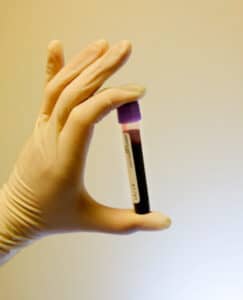If you are familiar with my book, The Whole-Body Approach to Osteoporosis, you know how important lab tests are for assessing, managing, and improving bone health. Today I would like to talk about indices in the CBC (Complete Blood Count) that give us valuable information about the skeleton.
When we think about CBCs (I know…who but me sits around thinking about lab tests on New Year’s Day!?!) we think about testing for anemia, infections, and blood clotting issues. But CBCs can also tell us something about the quality and strength of bone.

Specifically, when looking for clues about skeletal health within the indices of the CBC, I like to look at the following 6 markers:
RBC count (red blood cells)
MPV (mean platelet volume)
NLR (neutrophil lymphocyte ratio)
RDW (red cell distribution width)
Hgb (hemoglobin)
MCV (mean corpuscular volume)
RBC count: When the red blood cell count is even slightly low it may indicate an accumulation of fat cells within the bone marrow. An excessive number of fat cells not only crowds out RBC-forming stem cells (hematopoietic stem cells), but also leads to an increase in the level of PPAR- gamma, a protein that stimulates the osteoclasts to break down bone. In addition, a low RBC count may indicate a reduced number of bone-forming osteoblast cells because osteoblasts play a central role in hematopoiesis by releasing red blood cell growth factors.
MPV: Elevated MPV is an early marker for platelet cell activation seen in low-grade inflammation. It is low-grade chronic systemic inflammation that is the main fuel behind all chronic disease, including osteoporosis.
NLR: An elevated neutrophil to lymphocyte ratio is an indicator of chronic systemic inflammation and is negatively associated with bone mineral density. NLR greater than 2.5 is correlated to low bone density.
RDW: The size of red blood cells becomes more variable with age and the RDW is an indication of this variability. An RDW greater than 15% carries a greater risk for fracture. (Kim, K.M., et al. 2019 ASBMR Ann Meeting Abstracts, #1069)
Hgb: Abnormal hemoglobin levels can indicate too much or too little iron in the body. This can impact skeletal health by increasing osteoclastic activity, leading to bone loss.
MCV: This is a measure of the average size of red blood cells. When elevated, it may indicate a deficiency in vitamin B-12 and/or folate. Pernicious anemia is a condition that reduces the absorption of vitamin B-12 and calcium. Vitamin B-12 has a direct influence on osteoblastic bone-building activity. An elevated MCV is a flag to look at homocysteine, a protein metabolite that contributes to chronic systemic inflammation and reduced bone quality.

